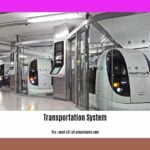Noise pollution is a growing concern in today’s modern world, affecting our health, well-being, and the environment. In this article, we will delve into the ten main causes of noise pollution, uncovering the sources that contribute to this pervasive issue. From industrial activities to urban development, transportation, and recreational noise, we will explore the detrimental effects of each and provide insights and solutions to mitigate their impact. Join us as we unveil the 10 main causes of noise pollution and discover practical measures to combat this problem.
Key Takeaways:
- Industrialization, especially the use of large machinery and plants in industries, is a major contributor to noise pollution.
- Traffic noise from vehicles on roads, such as cars and buses, is a significant source of noise pollution in cities.
- Loud music at social events and gatherings adds to noise pollution.
- Construction sites produce high levels of noise due to heavy machinery and equipment.
- Poor urban planning, including locating residential areas near industrial zones or busy roads, can lead to significant noise pollution.
- Household equipment like mixers, vacuum cleaners, and pressure cookers contribute to indoor noise pollution.
- Air traffic, although fewer in number compared to cars, produces high-decibel noise and contributes to noise pollution.
- Unnecessary use of fireworks during celebrations and festivals produces loud noises.
- Tourism activities, including concerts and festivals, can generate excessive noise levels.
- Animals, like barking dogs, can contribute to noise pollution in residential areas.
- Other causes of noise pollution include loud music from events, transportation (trains and airplanes), maintenance activities, lawn care, generators, and household equipment.
10 Main Causes of Noise Pollution

Noise pollution is a growing concern in our modern society, impacting our health, well-being, and the environment. By understanding the main causes of noise pollution, we can take steps towards mitigating its adverse effects. In this article, we will delve into the ten main causes of noise pollution and explore potential solutions to address this issue.
1. Industrialization
The rapid growth of industries has significantly contributed to noise pollution. The use of large machinery and plants in manufacturing processes emits high levels of noise. This constant exposure to industrial noise not only affects the workers but also the surrounding communities. Proper regulation and enforcement of noise control measures can help reduce the impact of industrialization on noise pollution.
2. Sound Pollution on Roads
Traffic noise is a major source of noise pollution, especially in urban areas. The constant honking of car horns, the rumbling of engines, and the screeching of brakes create a cacophony that disrupts the peace and tranquility of our cities. Implementing traffic management strategies, such as enforcing speed limits, promoting public transportation, and developing quieter road surfaces, can help alleviate this issue.
3. Social Events
Loud music at events and gatherings adds to noise pollution, particularly in residential areas. Whether it’s a concert, a wedding, or a public celebration, the amplified sound can reach levels that are detrimental to both human health and the environment. Encouraging event organizers to adhere to noise restrictions and providing soundproofing measures can help minimize the impact of social events on noise pollution.
4. Construction Work
Construction sites are notorious for producing high levels of noise due to the operation of heavy machinery and equipment. The constant pounding, drilling, and hammering disrupt the peace of nearby communities and can even lead to sleep disturbances and stress-related health issues. Limiting construction activities during sensitive hours, employing noise barriers, and utilizing quieter machinery can help reduce noise pollution from construction sites.
5. Poor Urban Planning
Improper planning of cities can contribute to noise disintegration and pollution. Residential areas located near industrial zones, busy roads, or airports are particularly affected. Noise barriers, proper zoning regulations, and strategic green spaces can help create a buffer between noise-generating areas and residential neighborhoods, thus minimizing the impact of poor urban planning on noise pollution.
6. Household Sounds
Our own homes can be sources of indoor noise pollution. Household equipment such as mixers, vacuum cleaners, and pressure cookers can produce high levels of noise, especially when used in close proximity to living spaces. Choosing quieter appliances, incorporating sound-absorbing materials in construction, and practicing noise-conscious habits can help reduce noise pollution within our homes.
7. Air Traffic Sound
While there may be fewer aircraft flying over cities compared to cars on the roads, they produce high-decibel noise that can be disturbing, particularly for those living near airports. Implementing noise abatement procedures, utilizing quieter aircraft technologies, and providing insulation measures for affected communities can help alleviate the impact of air traffic sound on noise pollution.
8. Unnecessary Use of Fireworks
Fireworks may bring delight during celebrations and festivals, but their loud explosions contribute to noise pollution. Finding alternative ways to celebrate, such as using silent fireworks or minimizing the use of fireworks altogether, can help reduce noise pollution while still creating a festive atmosphere.
9. Tourism
Tourism activities, such as concerts and festivals, can generate excessive noise levels, particularly in popular tourist destinations. Balancing the economic benefits of tourism with the need to protect the well-being of local residents and the environment requires implementing noise control measures, setting noise limits, and finding innovative ways to manage noise from tourism-related activities.
10. Animals
Animals, such as barking dogs, can also contribute to noise pollution, especially in residential areas. Encouraging responsible pet ownership, proper training of animals, and implementing regulations for noise control from pets can help minimize the impact of animal noise on noise pollution.
In addition to these ten main causes, other contributors to noise pollution include loud music from events, various forms of transportation (trains and airplanes), maintenance activities, lawn care, generators, and other household equipment. Understanding these causes and implementing appropriate solutions can help us move towards a quieter and more peaceful environment.
Remember, mitigating noise pollution requires a collective effort from individuals, communities, industries, and governments. By taking steps towards reducing noise pollution, we can ensure better health and a higher quality of life for ourselves and future generations.
Here are 10 interesting facts about the African savanna that will leave you in awe. Did you know that lions have a unique social structure? Explore more fascinating facts about the African savanna here.
Discover the 10 major environmental problems that we need to address urgently. From pollution to deforestation, these issues require our immediate attention. Click here to learn more about these crucial challenges.
Belize is home to some of the most extraordinary rivers. Dive into the world of Belizean nature as we present 10 major rivers in Belize that will mesmerize you. Start your exploration by clicking here.
Stay informed about the 10 most important environmental issues that affect our planet today. From climate change to loss of biodiversity, these problems demand action. To gain insights into these pressing concerns, click here.
The world faces several critical environmental challenges. Delve into the 10 most important environmental issues that are shaping our future. Click here to understand the magnitude of these global problems and the urgent need for solutions.
Transportation Noise Sources

Traffic-related sources, such as airports, rail systems, and new roads, contribute significantly to noise pollution. Unwanted or excessive sound, also known as noise, has detrimental effects on society and the environment. In this article, we will delve into the ten main causes of noise pollution, focusing specifically on transportation noise sources. Let’s explore the impacts and potential solutions to this growing issue.
Impacts of Transportation-Related Noise Pollution
Transportation noise pollution has several negative consequences for our health, well-being, and the environment. Long-term exposure to noise and pollution from transportation can lead to sleep disturbance, stress, asthma, high blood pressure, and cardiovascular diseases[^1^]. Furthermore, noise pollution disrupts our daily lives, making it difficult to concentrate, communicate, and enjoy a peaceful environment. It also hampers wildlife habitats and affects the overall balance of ecosystems.
Causes of Transportation Noise Pollution
Highway Traffic – Traffic noise from highways, particularly in urban areas, is a major contributor to noise pollution. Factors such as traffic volume, speed, and the number of trucks in the flow can significantly impact noise levels[^2^].
Airports – Air traffic sound, especially near airports, produces high-decibel noise that disturbs nearby communities. The constant roar of engines and aircraft takeoff and landing contribute to noise pollution in residential areas.
Rail Systems – Trains generate substantial noise, especially when passing through populated areas or during late-night operations. The screeching of brakes, rumbling wheels, and horn honking contribute to noise pollution.
Construction Activities – Construction work involving heavy machinery, drilling, and pounding creates high levels of noise that disrupt nearby communities. Although construction noise is generally not considered a serious impact, it is an essential factor to consider in noise pollution mitigation efforts.
Traffic Management – Inefficient traffic management, such as traffic congestion and erratic driving, can exacerbate noise pollution. Implementing effective traffic management techniques is crucial to reducing transportation-related noise.
Road Design – The design of roadways plays a significant role in noise pollution. Noise-compatible planning and alterations to roadways can help reduce noise levels. Additionally, incorporating noise barriers and sound-absorbing surfaces can mitigate noise pollution.
Vehicle Noise Control – Implementing stricter regulations and technological advancements in vehicle noise control can lead to quieter transportation systems. Noise reduction measures can include the use of quieter engines, soundproofing materials, and noise-reducing tires.
Public Transportation Noise – While public transportation contributes to a greener environment, it can also generate noise. Addressing the noise levels produced by buses, trams, and other forms of public transport is essential for sustainable noise pollution management.
Shipping and Ports – Noise pollution from shipping, harbors, and ports can have substantial environmental and societal impacts. Measures such as noise reduction technologies in ships and improved port infrastructure can help mitigate the noise generated.
Traffic Flow Strategies – Implementing traffic flow strategies that reduce congestion and promote smoother traffic movement can have a positive impact on noise pollution. Efficient traffic flow can minimize the time vehicles spend on the road, thereby reducing noise levels.
Key Takeaways:
- Transportation-related sources, such as highways, airports, and rail systems, contribute significantly to noise pollution.
- Long-term exposure to transportation noise can lead to health problems and disrupt daily lives.
- Mitigation measures such as noise-compatible planning, traffic management, and vehicle noise control can help reduce transportation noise pollution.
- Efficient traffic flow strategies and the use of noise reduction technologies in ships and ports are crucial in addressing noise pollution.
- Collective efforts from individuals, communities, industries, and governments are essential to mitigate noise pollution and create a quieter and more peaceful environment.
Transport is the main cause of noise and air pollution\
Traffic Noise & Transportation – American Association of State Highway
Recreational Activities and Events: Unveiling the 10 Main Causes of Noise Pollution
Noise pollution is a pervasive problem that affects society in many ways. From interrupting our peace and quiet to impacting our physical and mental well-being, noise pollution has detrimental effects on our lives. In this article, we will uncover the ten main causes of noise pollution, with a particular focus on recreational activities and events.
Cars and Buses: The Roaring Culprits
Road vehicles, such as cars and buses, are among the major contributors to noise pollution. The noise generated from their engines, blaring horns, and screeching brakes can disturb communities worldwide. The constant presence of traffic can make our neighborhoods noisy and chaotic.
Fireworks: Beautiful Displays, Boisterous Disruptions
Fireworks, often associated with celebrations, may create stunning visual spectacles, but they also contribute to noise pollution. The loud explosions and crackling noises disrupt the peace and quiet of residential areas. Finding alternative ways to celebrate can help us reduce the noise pollution caused by fireworks.
Construction Sites: Building Noise, Community Disturbance
Construction sites are notorious for generating high levels of noise. The sounds of heavy machinery, power tools, and vehicles can disrupt the tranquility of nearby residents. The constant pounding and drilling can be incredibly disruptive and affect the quality of life in the surrounding area.
Tourism Buzz: Where Noise Pollution Takes Center Stage
The tourism industry, while promoting excitement and entertainment, can also contribute to noise pollution. Recreational activities and events, such as music festivals, sporting events, and car racing, generate excessive noise that impacts both locals and visitors. Balancing the enjoyment of tourists with the preservation of peace and tranquility is crucial.
Concerts and Festivals: Unleashing the Noise
Live music events and festivals are synonymous with fun and enjoyment, but they can also produce loud and prolonged noise. These events can disrupt nearby neighborhoods and communities, causing disturbances in the surrounding areas.
Animals: Nature’s Noisy Neighbors
Animal-related noises, including barking dogs, crowing roosters, and chirping birds, can contribute to noise pollution, especially in urban areas. While these sounds are a part of nature, finding ways to manage and minimize their impact on our surroundings can help create a more peaceful environment.
Air Traffic: The Sound Above
Aircraft noise from take-offs, landings, and engine operations can disturb communities living near airports or flight paths. The constant drone of planes can disrupt the peace and quiet of residential areas, affecting the well-being of individuals residing nearby.
Poor Urban Planning: Disrupting the Symphony of Life
Inadequate urban planning can lead to noise pollution, particularly when residential areas are located near highways or industrial zones. Improper placement of buildings and failure to mitigate noise disturbances can significantly impact the quality of life for residents in these areas.
Our awareness and understanding of the ten main causes of noise pollution, including recreational activities and events, allows us to take necessary steps towards mitigating its adverse effects on our health, well-being, and the environment. By implementing noise regulations and standards, utilizing sound barriers or insulation materials, promoting the use of quieter technologies, and creating designated quiet zones in urban areas, we can foster a quieter and more peaceful society.
Key Takeaways:
– Noise pollution from recreational activities and events, including fireworks, concerts, and festivals, disrupts communities and affects quality of life.
– Construction sites and urban areas near highways or industrial zones contribute significantly to noise pollution.
– Road vehicles like cars and buses, as well as air traffic, are major sources of noise pollution.
– Animal-related noises, such as barking dogs and chirping birds, can also contribute to noise pollution in urban areas.
– Implementing noise regulations, using sound barriers, and promoting quieter technologies are effective measures to mitigate noise pollution.
Sources:
1. 10 Types of Noise Pollution That Affect Society – Tourism Teacher
2. Causes of Noise Pollution – Effects and Prevent – Vedantu
Domestic Noise Sources
Noise pollution is a pervasive issue in society, impacting our health, well-being, and the environment. While there are various causes of noise pollution, it is essential to delve into the specific sources within our homes and communities. In this article, we will focus on exploring the significant contributors to noise pollution originating from domestic sources.
Cars and Buses
One of the primary sources of noise pollution is the noise generated by cars and buses. The constant hum of engines, blaring of horns, and screeching brakes can disrupt the peace in residential areas and urban environments alike. The unchecked noise levels from road vehicles cause disturbances and have detrimental effects on our mental well-being.
Construction Sites
Construction sites are known for generating high levels of noise, creating a significant impact on nearby communities. The clattering of heavy machinery, the clamor of power tools, and the continuous rumbling of construction vehicles contribute to noise pollution and disrupt the tranquility of residential areas.
Outdoor Gatherings and Social Events
Outdoor gatherings, such as concerts and festivals, often produce loud music and lively crowds. The noise generated from these events reverberates through neighborhoods and communities, leading to noise pollution and disturbances.
Animal-Related Noises
Our beloved pets and wildlife can also contribute to noise pollution. Barking dogs, crowing roosters, and chirping birds can create excess noise, especially in urban areas, causing disruptions in residential spaces.
Fireworks
While fireworks are often associated with celebrations, it’s important to recognize that they can contribute to noise pollution. The loud explosions and bangs from fireworks displays can disturb both residential areas and wildlife habitats.
Household Equipment
Household equipment, although essential in our daily lives, can generate noise pollution. Gadgets such as mixers, vacuum cleaners, and pressure cookers emit sound that can add to indoor noise pollution and disturb the peace in our homes.
Traffic within Residential Areas
In residential areas, traffic noise from vehicles passing through can contribute to noise pollution. The constant flow of cars and honking can disrupt the tranquility of neighborhoods and negatively impact our quality of life.
Inadequate Urban Planning
Poor urban planning can lead to noise pollution. When residential areas are situated near highways, industrial zones, or busy roads, the noise levels can exceed acceptable limits. The improper location of buildings contributes to excessive noise that can harm the well-being of residents.
Air Traffic
Airports and flight paths are common sources of noise pollution. The sounds of aircraft take-offs, landings, and engine operations can disturb nearby communities, causing discomfort and impacting their quality of life.
Tourism Activities
Popular tourist destinations often host various activities like concerts and festivals. While these events bring joy and excitement to visitors, they can also generate excessive noise, impacting both locals and tourists.
Through understanding and addressing these domestic noise sources, we can take steps to mitigate noise pollution and create a quieter and more peaceful environment for all.
Key Takeaways:
- Noise pollution from domestic sources has adverse effects on our health, well-being, and the environment.
- Cars and buses contribute significantly to noise pollution with engine noise, honking, and squeaking brakes.
- Construction sites generate high levels of noise, including heavy machinery and power tools.
- Outdoor gatherings and social events, such as concerts and festivals, produce loud music that disrupts communities.
- Animal-related noises, such as barking dogs and chirping birds, contribute to noise pollution in urban areas.
- Fireworks, although festive, create loud noises that disturb residential areas.
- Household equipment like mixers, vacuum cleaners, and pressure cookers emit sound that adds to indoor noise pollution.
- Traffic within residential areas contributes to noise pollution with constant car flow and honking.
- Inadequate urban planning can result in noise pollution from highways, industrial zones, and busy roads near residential areas.
- Air traffic, particularly near airports, produces noise from aircraft operations.
- Tourism activities, including concerts and festivals, can generate excessive noise in popular destinations.
- Addressing and mitigating these domestic noise sources is crucial for creating a peaceful and quiet environment for all^[1^^],[^2^^].
FAQ
Q1: What are the ten main causes of noise pollution?
A1: The ten main causes of noise pollution include industrialization, traffic noise on roads, social events with loud music, construction work, poor urban planning, household sounds, air traffic noise, unnecessary use of fireworks, tourism activities, and animal noises.
Q2: How does industrialization contribute to noise pollution?
A2: Industrial activities involving large machinery and plants produce noise pollution. The use of these machines and equipment generates high decibel levels, contributing to the overall noise pollution in the environment.
Q3: What role does poor urban planning play in noise pollution?
A3: Poor urban planning can lead to noise pollution by locating residential areas near industrial zones or busy roads. When residential areas are situated close to sources of noise such as factories or highways, the residents are more likely to experience higher levels of noise pollution.
Q4: How does air traffic contribute to noise pollution?
A4: Airplanes produce high-decibel noise during take-offs, landings, and engine operations. This noise can disturb communities living near airports or along flight paths, contributing to noise pollution in those areas.
Q5: How can tourism activities contribute to noise pollution?
A5: Tourism activities, such as concerts and festivals, often involve loud music and other sources of excessive noise. These events can generate high levels of noise pollution, affecting both local residents and visitors in the surrounding areas.
- Unlocking Francis Alexander Shields’ Finance Empire: A Comprehensive Biography - July 12, 2025
- Unveiling Francis Alexander Shields: A Business Legacy - July 12, 2025
- Francis Alexander Shields’ Business Career: A Comprehensive Overview - July 12, 2025















